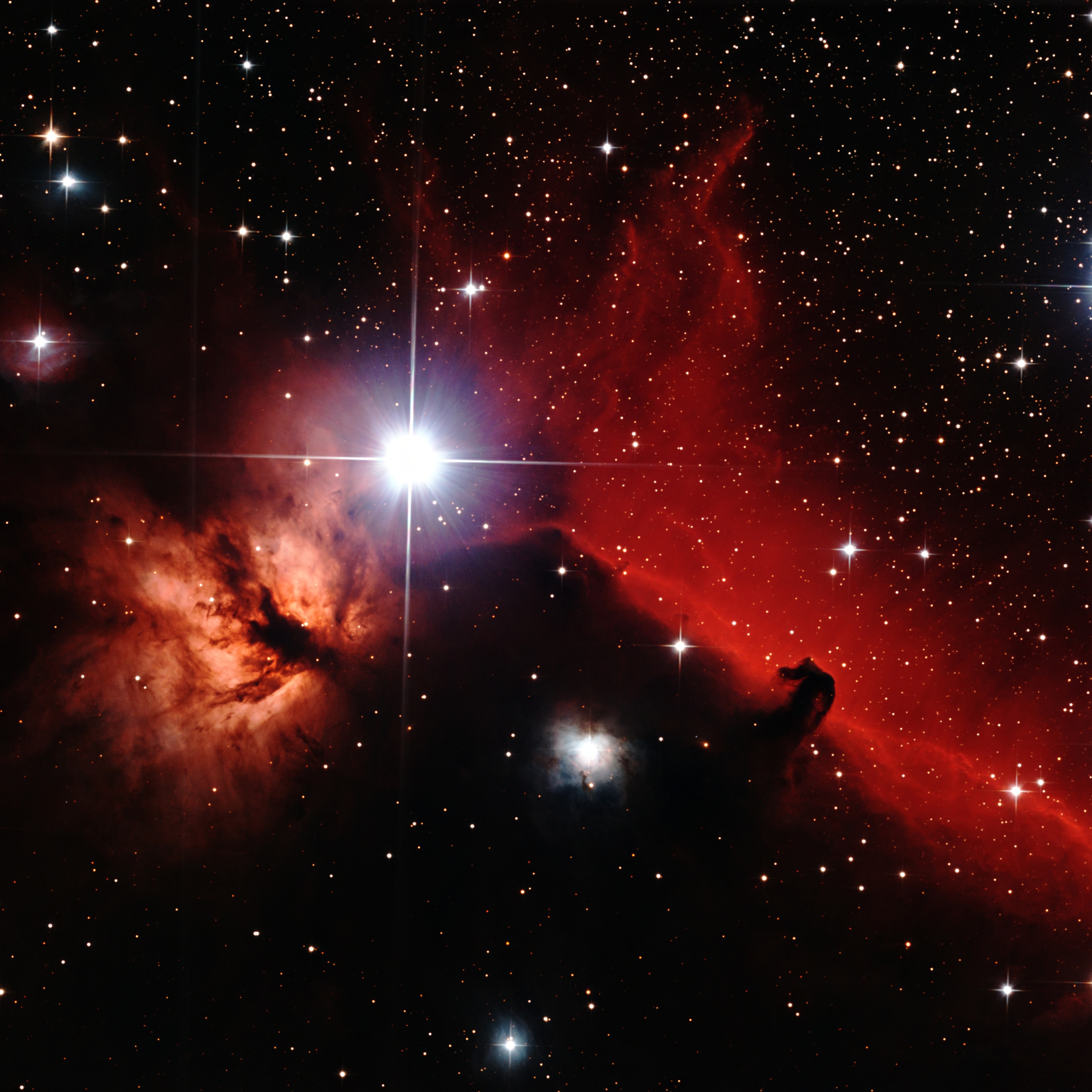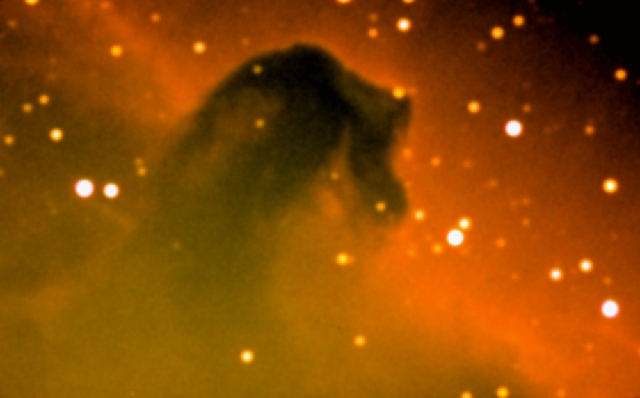
To zoom in or out on a computer, hold down the Ctrl key and scroll with the mouse, or you can press the + or - key. On a smart phone use 2 fingers.

HORSEHEAD & FLAME Nebula on 2023-12-16,17,18
The Horsehead Nebula, IC434 , also known as Barnard 33,
and its companion, the Flame Nebula, sit near the star Alnitak in Orion’s Belt.
They are located about 1,400 light-years from Earth. The Horsehead is a dark,
light-gobbling nebula made of cold gas and dust. This dark cloud’s signature
shape is only visible because its silhouette obscures the light from the
brighter nebula behind it. The horse’s prominent “jaw” is actually shaped by
intense radiation from a nearby star blowing on the dark cloud. The Horsehead
Nebula is just one piece of the much larger Orion Molecular Cloud Complex. This
star forming region spreads across hundreds of light-years and covers much of
the Orion constellation. By studying it, astronomers have learned the stellar
nursery has already given birth to young stars, some even with protoplanetary
disks.
Previous, Older Photos

HORSEHEAD & FLAME NEBULA NEBULA on 2021-01-17
This photo was done in my backyard in Kyle, Texas through a 4.5-inch f/4 Telescope, mounted piggyback on my 17.5-inch telescope, driven by my home built AZ/ALT mount, using a ZWO ASI533MC PRO color camera. The total image acquisition time is: 02 hrs 07 min 00 sec.

OBJECT = Horsehead Nebula
TELESCOPE = 17.5 inch f3.23
CAMERA = ST-7E;
LOCATION = Seguin Outdoor Learning Center - Seguin, Texas
DATE (Yr-Mo-Dy) = 2005-12-29
TIME (UT) = 07:36:40
IMAGES STACKED = 14
INDIVIDUAL EXPOSURES = 60 sec
TOTAL EXPOSURE TIME = 840 sec.
